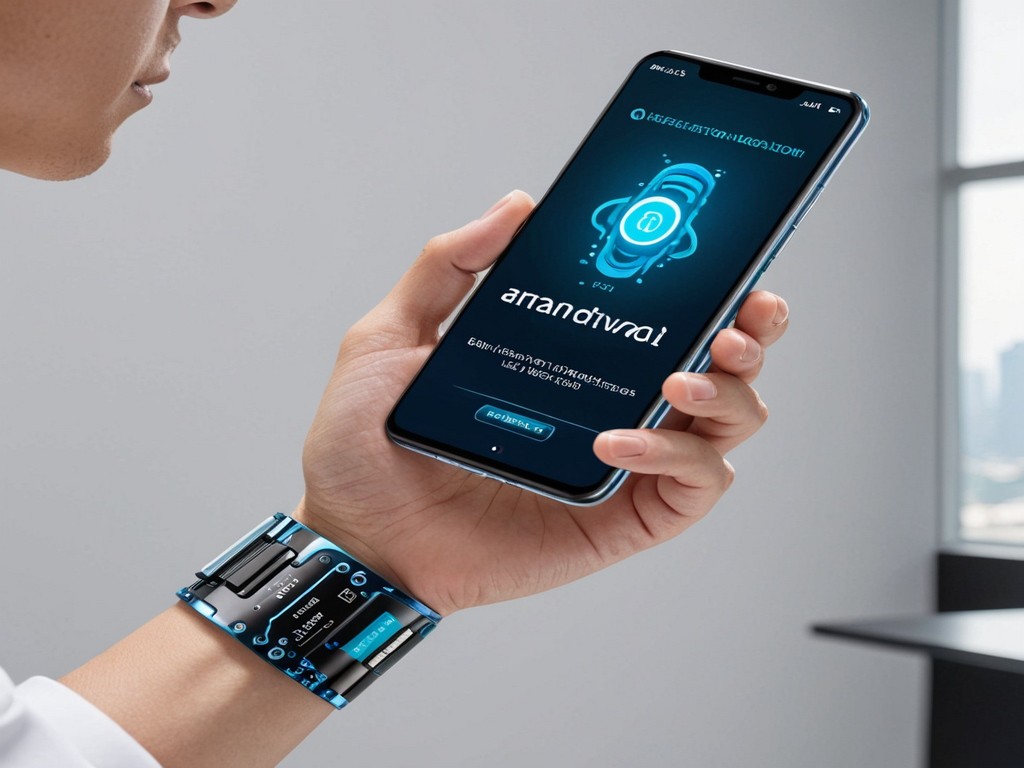Smartphones, which are the bedrock of modern technology, undergo continuous transformation due to development in artificial intelligence (AI), birthing new possibilities. For instance, with AI designs and software experiencing a lot of progress, firms such as Arm Holdings have taken the lead in steering the next phase of change that smartphones are undergoing. As a result, among other things, these developments make phones more efficient for users and add many new features that redefine what they mean.
The strategic inclusion of AI into smartphones marks a paradigm shift towards smarter and more autonomous devices capable of carrying out tasks like computational photography and real-time language translation.
This paper explores how Arm’s smart innovation in AI designs and software is changing the smartphone industry. It considers not just making typical consumer smartphone usage better with improved AI features but also other areas where it is being used.
In addition to that, it brings up another aspect as regards chip design delivery revolutionized by Arm through deals with manufacturers like TSMC or Samsung aimed at ensuring that the next generation smartphones including those to be released in 2023 will satisfy growing demand for intelligent workloads.

Arm's Strategic Innovation in AI Designs and Software for Smartphones
Brief A Look at Arm’s Recent Revelation of New AI Chip Designs
I have seen recently that Arm Holdings has launched a set of three newly developed chips based on the Armv9 architecture. 2 architecture. The symbol, Cortex X925, is shown to offer 36% higher performance figures than predecessors; Arm again stresses leveraging AI to improve phone functionalities.
An Arm Compute Subsystem (CSS) is a client
In this latest Arm CSS for Client, it incorporates new high-performance CPUs and GPUs that are set to enhance artificial intelligence and other process-related computations on customer-end hardware. This suggests an array of enhancements regarding performance and efficiency which is important to meet the ongoing trend of AI-driven applications on mobile platforms.
The concepts of increased performance and efficiency
Arm’s strategic innovations in such areas are set to unlock the next level of innovation and efficiency in the Smartphone industry by providing better processing power. For instance, the Cortex X925 provides 41% improved AI responsiveness out of the box for critical use cases such as generative AI and large language models that improve user experience without degradation in battery life.
Enhancing AI Capabilities in Smartphones and Beyond
Arm has been critical to smartphones’ rise by providing efficient computing platforms while consuming minimum power. Arm originally started with mobile but with smartphones becoming more powerful over the years, it made its way into other segments such as PCs and data center industry.
Effectiveness of Arm’s Technology in the Revolution of Smartphones
The Arm’s Cortex-A CPU cores and Mali GPUs have determined the performance and efficiency of the smartphone processors, thereby making it possible to have ever powerful mobile devices.
PCs and Data Center: The progression to new markets
The use of Arm architecture processors is expanding to the laptop and desktop models, improving battery life and performance on various tasks. In data centers, Arm-based approaches are becoming more widespread and offer a viable solution to traditional x86 architectures.
New CPU architectures, GPUs, and SW tools for AI and machine learning
New Arm CPU architectures, GPUs, and software development kits are developed to meet the expanding demand for Artificial Intelligence computing in both end and data center devices. This has made digital signal processing and machine learning more advanced enabling Arm systems to be more stronger and secure.
Revolutionizing Chip Design Delivery
Arm’s partnership with Samsung and TSMC indicates a new era in chip design delivery, which not only involves using 2-nanometer Gate-All-Around technology for the newer generation of AI chipsets. This collaboration will further strengthen the generative AI in mobile computing work; Samsung will use its GAA process node to boost the performance of the Cortex-X CPU.
Transitioning from preliminary sketches to blueprints helps cut out unnecessary steps in the production process and, thus, saves time in the marketplace. Arm and its partners are using the design-technology co-optimization approach to get the most out of the performance, power, and area within tight time-to-market constraints while achieving ‘first- silicon-right’.
Conclusion
This is evidenced by Arm Holdings’ improvement in this bracket leading to the invention of smarter, faster, and more efficient smartphones than ever before. Through new chip designs, let alone the advancement of strength in AI, Arm not only boosts the consumer side but also expands its impacts in sectors like PCs and data centers. These innovations reflect a great advance, and it shows that smartphones and technology in the future will be able to blend with the daily realities of life and enhance the potentiality.
In addition, Arm’s partnerships with technology gaints which includes Samsung and TSMC gives credence to the notion that partnerships indeed play a critical role in defining what are possible in this digital age. While consciously driving advanced AI integration and promoting demand for faster-chip designs, Arm is preparing the ground for the next-generation devices. These advancements are not only fascinating in the technological community but also eventually revolutionalise human’s relationship with technological devices, which contributes to the enhancement of the future of mobile computing.
FAQs
1. If so how might AI be used to enhance the functionality of smartphones?
AI adds the functionality of having high-end barriers in smartphones as a result of its integration. These are facial recognition and behavioral biometrics which remains one of the most defenses against cyber threats. Given the present reality, that smartphones are an essential tool in most people’s lives and even work, the protection of user data becomes a vital question.
2. What are the categories and examples of AI in a Smartphone?
AI operates in the background of mobile clients and assists in accomplishing various functions. Among the introduced functions, the following options are noteworthy: improving the quality of photographs, translating language, recognizing music, and improving games. This kind of technology is referred to as on-device AI.
3. Why is the importance of AI increasing on smartphones and technology?
Hence, AI plays a critical role in increasing the usage of smartphones among PWDs. It also combats issues with language translation by translating content real-time and has options such as voice command and text-to-speech for the physically challenged. These capabilities make smartphones to be more flexible and even easier to handle or operate.
4. Where and how is AI used today?
The use of AI is visible in different sectors and to develop novel things such as self-driving cars. In healthcare, AI simplifies and extends the effectiveness of devices used in diagnosing illnesses thus improving identification of the diseases, and increasing medical productivity.


